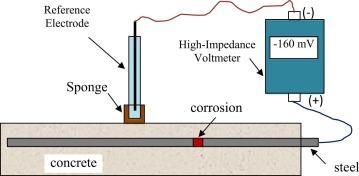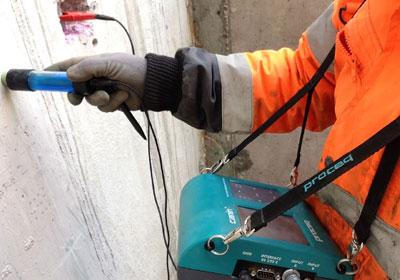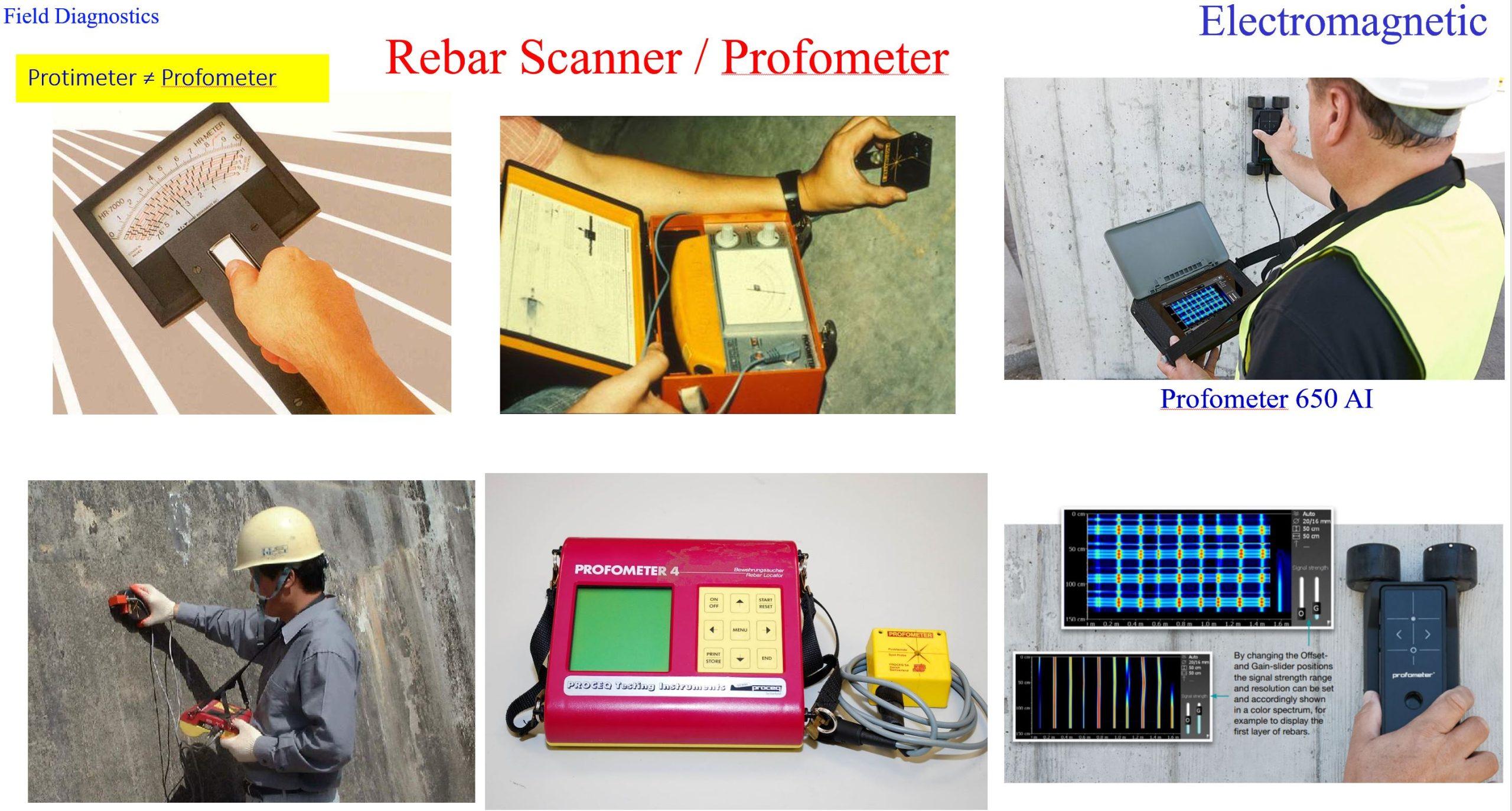Case 1
- Introduction
- Causes of Defects
- Good Practices
- Standards
- Maintenance and Diagnostics
- Remedial
- Similar Cases
- References
Maintenance and Diagnostics
- It is known that good quality concrete does not require extensive maintenance. However, due to external factors it might deteriorate even before reaching its design life, resulting in cracking and spalling.
- An efficient inspection system should be adopted to ensure the conduct of regular checks such as visual regular inspections should be carried out periodically to detect defects.
- The instruments can be used extensively to diagnose defects and to take remedial action to keep the structure in good condition.
- The following instruments and techniques can be used to detect excessive carbonation and cracks in concrete structures.
Diagnostics of Defects (see also NDT)
Half Cell Potential Measurement
The main application of Half cell measurement is to evaluate the probability of corrosion of the steel reinforcement embedded in the concrete members. This is measured in relation to the potential value readings.


Profometer (Covermeter) – rebar scanner
Profometers (covermeters), based on the principles of electromagnetism, are use to locate and to measure the depth of rebar (concrete cover).

Carbonation Test
The depth of carbonation in the freshly exposed surfaces of concrete can be determined by spraying with phenolphthalein indicator solution. In the case that pink colour appears, it means that the concrete still retains its alkaline nature and carbonation is minimal.
This test can be done in the laboratories as well as on sites.

Thermography
Thermography can be used to identify the position of cracks. A range of crack widths, representing mechanical damage, has been induced under controlled laboratory conditions.

The method is based on the characteristics of heat flow phenomenon, in a conductive medium of specific geometry, which is intended to model predetermined boundary conditions. Thermo tracer is an advanced equipment used in thermography technology.